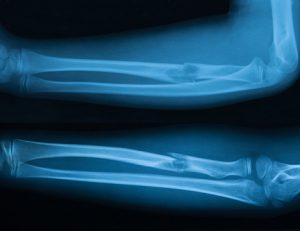
Osteonecrosis commonly occurs at the end of the femur, the upper bone in the arm, knees, shoulders and ankles. Osteonecrosis of the jaw (ONJ) can occur, although rare, and the cause of that is suspected to be the use of bisphosphonate medications. Bisphosphonate medications are commonly used to treat osteoporosis as well as other bone diseases. Incidences of ONJ have been found to be higher in individuals with cancer who are taking bisphosphonate medications to preserve bones.
Disability can occur from osteonecrosis but varies depending on which bones are affected. In a healthy individual bone breaks down and rebuilds itself, but in a person with osteonecrosis this rebuild never occurs as blood supply is lost.
Other risk factors and symptoms of osteonecrosis
- Trauma like hip dislocation
- Steroid use
- Excessive alcohol use
- Certain medications can weaken bones
- Pancreatitis
- Diabetes
- HIV/AIDS
- Systemic lupus erythematosus
- Sickle cell anemia
The symptoms of osteonecrosis are not a result of immediate damage or changes to the bones. You may have osteonecrosis for quite some time and not notice any symptoms, until the bones become much weaker and are about to collapse. You may experience pain in your bones or joints, which can vary from mild to severe. Lastly, pain may only occur in certain positions, such as lying down or putting pressure on the joint. If you begin to notice sudden pain and can’t recall its source, go get your bones and joints checked out.
Treatments and prevention
Treatments for osteonecrosis are dependent on several things, such as the patient’s age, the stage of the disease, the location of the affected bone and the underlying cause of the conditions.
Treatment options for osteonecrosis include:
- Lose weight in order to lighten weight on affected area
- Partake in range of motion exercises
- Electrical stimulation to promote bone growth
- Core decompression, which removes the inner cylinder of the bone and reduces pressure in the bone
- Osteotomy, which involves reshaping the bone to reduce stress to the affected area
- Bone graft, which transplants healthy bone from another area to the weakened bone
- Joint replacement, which usually occurs in the late stage of osteonecrosis as the joint has been destroyed
Prevention tips include limiting alcohol, keeping cholesterol levels low, and monitoring steroid use, which are all risk factors for the development of osteonecrosis.